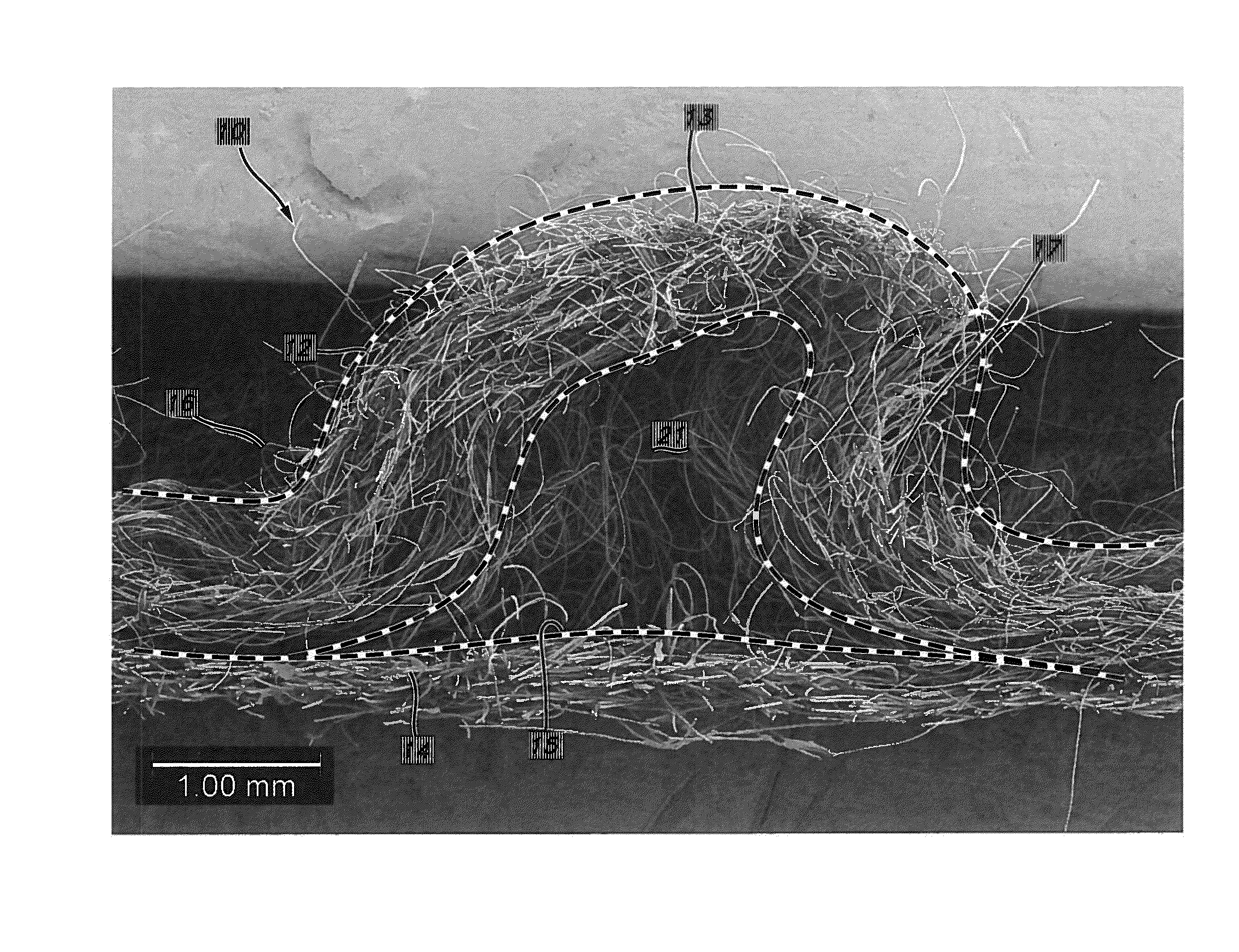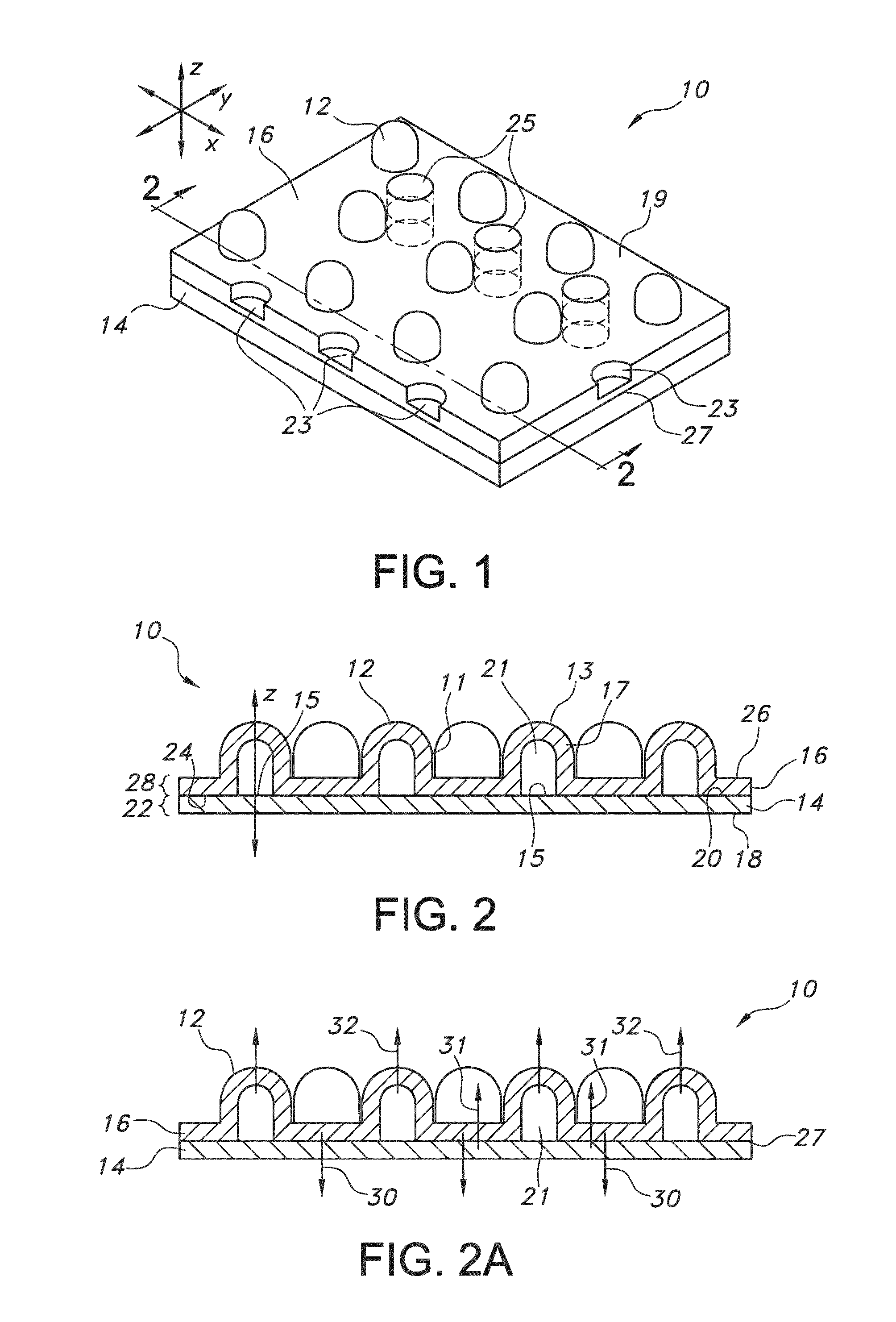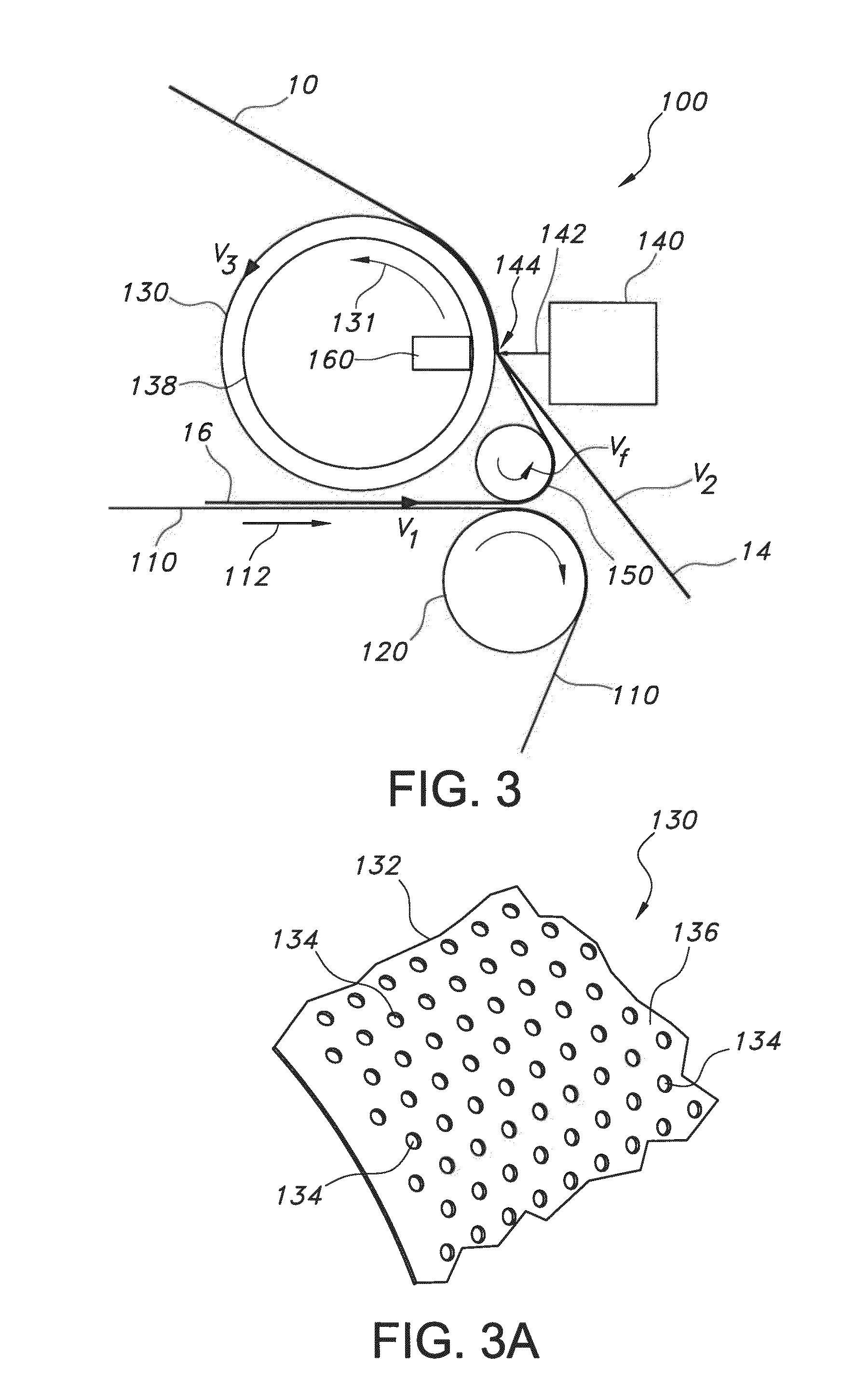Fluid-Entangled Laminate Webs having Hollow Projections and a Process and Apparatus for Making the Same
a technology of laminate webs and hollow projections, which is applied in the field of fluid-entangled laminate webs and a process and apparatus for making the same, can solve the problems of material stiffening and becoming harsh to the touch, loss of starting thickness, and lack of resilience, and achieves more structural rigidity and abrasion resistance. , the effect of increasing the rigidity
- Summary
- Abstract
- Description
- Claims
- Application Information
AI Technical Summary
Benefits of technology
Problems solved by technology
Method used
Image
Examples
examples
[0102]To demonstrate the process, apparatus and materials of the present invention, a series of fluid entangled laminate webs 10 were made as well as projection webs 16 without support layers 14. The samples were made on a spunlace production line at Textor Technologies PTY LTD in Tullamarine, Australia in a fashion similar to that shown in FIG. 5 of the drawings with the exception being that only one projection fluid entangling device 140c was employed for forming the projections 12 in the texturizing zone 144. In addition, the projection web 16 was pre-wetted upstream of the process shown in FIG. 5 and prior to the pre-entangling fluid entangling device 140a using conventional equipment. In this case the pre-wetting was achieved through the use of a single injector set at a pressure of 8 bar. The pre-entangling fluid entangling device 140a was set at 45 bar, the lamination fluid entangling device 140b was set at 60 bar while the single projection fluid entangling device 140c press...
embodiments
Product Embodiments
[0123]Fluid-entangled laminate webs according to the present invention have a wide variety of possible end uses especially where fluid adsorption, fluid transfer and fluid distancing are important. Two particularly though non-limiting areas of use involve food packaging and other absorbent articles such as personal care absorbent articles, bandages and the like. In food packaging, it is desirable to use absorbent pads within the food packages to absorb fluids emanating from the packaged goods. This is particularly true with meat and seafood products. The bulky nature of the materials provided herein are beneficial in that the projections can help distance the packaged goods from the released fluids sitting in the bottom of the package. In addition, the laminate may be attached to a liquid impermeable material such as a film layer on the first side 18 of the support layer 14 via adhesives or other means so that fluids entering the laminate will be contained therein...
PUM
| Property | Measurement | Unit |
|---|---|---|
| angle | aaaaa | aaaaa |
| width | aaaaa | aaaaa |
| width | aaaaa | aaaaa |
Abstract
Description
Claims
Application Information
 Login to View More
Login to View More - R&D
- Intellectual Property
- Life Sciences
- Materials
- Tech Scout
- Unparalleled Data Quality
- Higher Quality Content
- 60% Fewer Hallucinations
Browse by: Latest US Patents, China's latest patents, Technical Efficacy Thesaurus, Application Domain, Technology Topic, Popular Technical Reports.
© 2025 PatSnap. All rights reserved.Legal|Privacy policy|Modern Slavery Act Transparency Statement|Sitemap|About US| Contact US: help@patsnap.com



